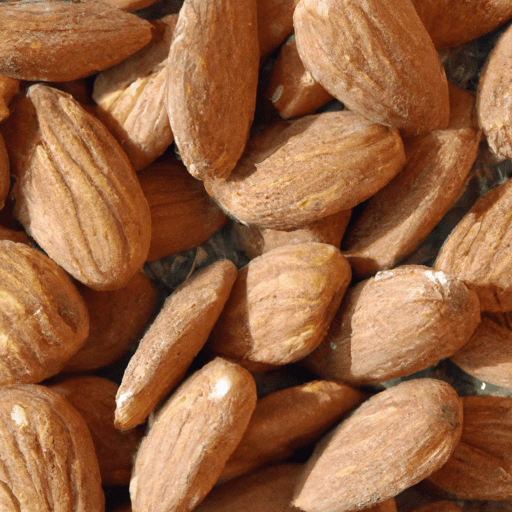The Versatile and Nutritious Ground Almonds
If you’re an avid baker or a fan of gluten-free and low-carb recipes, then ground almonds are an ingredient that should definitely be on your radar. Also known as almond meal or almond flour, ground almonds are not only delicious but offer a wide range of culinary possibilities. In this article, we will explore the taste, common uses, nutritional value, and some interesting facts about ground almonds.
Taste and Texture
Ground almonds possess a rich and distinct nutty flavor that adds depth to both sweet and savory dishes. The texture of ground almonds can vary depending on how finely they are processed. Finely ground almonds resemble a powder-like consistency, while a coarser grind adds a slightly grainy texture. Their nuttiness makes them a fantastic ingredient in many different recipes.
Common Uses in Cooking
Ground almonds are incredibly versatile and can be used in numerous ways in the kitchen. Here are some common uses:
Baking:
One of the most popular uses of ground almonds is in baking. They are commonly used to replace or supplement traditional wheat flour in gluten-free recipes. Ground almonds add moisture, richness, and a lovely nutty flavor to cakes, cookies, and other baked goods. You can even use them to make a delicious almond crust for pies and tarts.
Coating:
Ground almonds work wonders as a coating for proteins like chicken, fish, or tofu. The nutty crust not only provides a delightful crunch but also helps keep the meat tender and juicy during cooking. You can mix ground almonds with spices or herbs to create a custom coating blend.
Thickening:
In certain recipes like sauces, stews, or curries, ground almonds can be used as a thickening agent. When cooked with liquid, they release natural oils and create a creamy consistency, adding richness and body to the dish.
Vegan and Raw Desserts:
Ground almonds are a staple for those following a vegan or raw food lifestyle. They are frequently used as the base for cheesecake crusts, energy balls, or raw desserts due to their binding and slightly sweet qualities.
Almond Milk Production:
Ground almonds are the primary ingredient for making almond milk at home. By blending them with water, you can easily create a creamy and dairy-free alternative to regular milk.
Nutritional Value
Apart from their unique taste and versatility in recipes, ground almonds also offer a range of health benefits. They are a nutrient-dense ingredient packed with essential vitamins, minerals, and healthy fats. Here are some key nutritional facts about ground almonds:
- High in monounsaturated fats, which are heart-healthy and can help reduce bad cholesterol levels.
- An excellent source of vitamin E, which is an antioxidant that protects cells from damage.
- Provides a good amount of magnesium, a mineral important for bone health, energy production, and muscle function.
- Contains dietary fiber, which can support digestive health and promote feelings of fullness.
- Ground almonds are also naturally gluten-free and suitable for individuals with celiac disease or gluten intolerance.
Interesting Facts
To wrap up our exploration of ground almonds, let’s look at a few interesting facts:
- Ground almonds have been used in cooking for centuries and were commonly used as a substitute for flour during times of wheat scarcity.
- Almonds are believed to have originated in the Mediterranean region and have a rich history dating back thousands of years.
- California is the largest producer of almonds globally, accounting for approximately 80% of the world’s almond supply.
- In some Middle Eastern cuisines, ground almonds are a key ingredient in various traditional sweets and desserts, like baklava or halva.
In conclusion, the humble ground almonds are a versatile and nutritious ingredient that can elevate your cooking and baking endeavors. Their nutty flavor, flexible uses, and health benefits make them a valuable addition to any well-stocked kitchen pantry. Whether you’re experimenting with gluten-free recipes, looking to add a nutty twist to your dishes, or seeking a plant-based alternative, ground almonds are sure to satisfy both your taste buds and your health-conscious mind.
Ground Almonds
Origin and Common Uses: Ground almonds, also known as almond meal or almond flour, are made from finely ground almonds. Almonds themselves are native to the Mediterranean region, although they are now cultivated in various parts of the world. Ground almonds have a wide range of culinary uses. They are often used as a gluten-free alternative to wheat flour in baking, helping to create moist and tender baked goods. Ground almonds are also commonly used in making macarons, marzipan, almond butter, and almond-based sauces.
Nutritional Benefits: Ground almonds are highly nutritious and offer several health benefits. They are a good source of healthy fats, including monounsaturated fats, which can help reduce the risk of heart disease. Almonds are also rich in vitamin E, which is an antioxidant that helps protect cells from damage. Additionally, they provide dietary fiber, protein, magnesium, and other essential nutrients.
Unique Properties: Ground almonds have a unique texture and flavor. They have a slightly sweet and nutty taste, which adds depth to recipes. Ground almonds can also help improve the texture and moisture content of baked goods, making them more dense and rich. Due to their high fat content, ground almonds can sometimes turn rancid if not stored properly, so it is recommended to keep them in airtight containers in a cool, dark place or in the refrigerator.
Historical Significance: Almonds have a long history dating back thousands of years. They were cultivated in ancient civilizations such as Egypt, Greece, and Rome. The Romans considered almonds as a symbol of happiness and fertility, and they were often used in wedding ceremonies. Almonds have been highly valued throughout history for their nutritional properties. The introduction of almond flour in cooking has provided a versatile ingredient for various cuisines, especially in gluten-free and grain-free recipes.




Use the share button below if you liked it.
It makes me smile, when I see it.